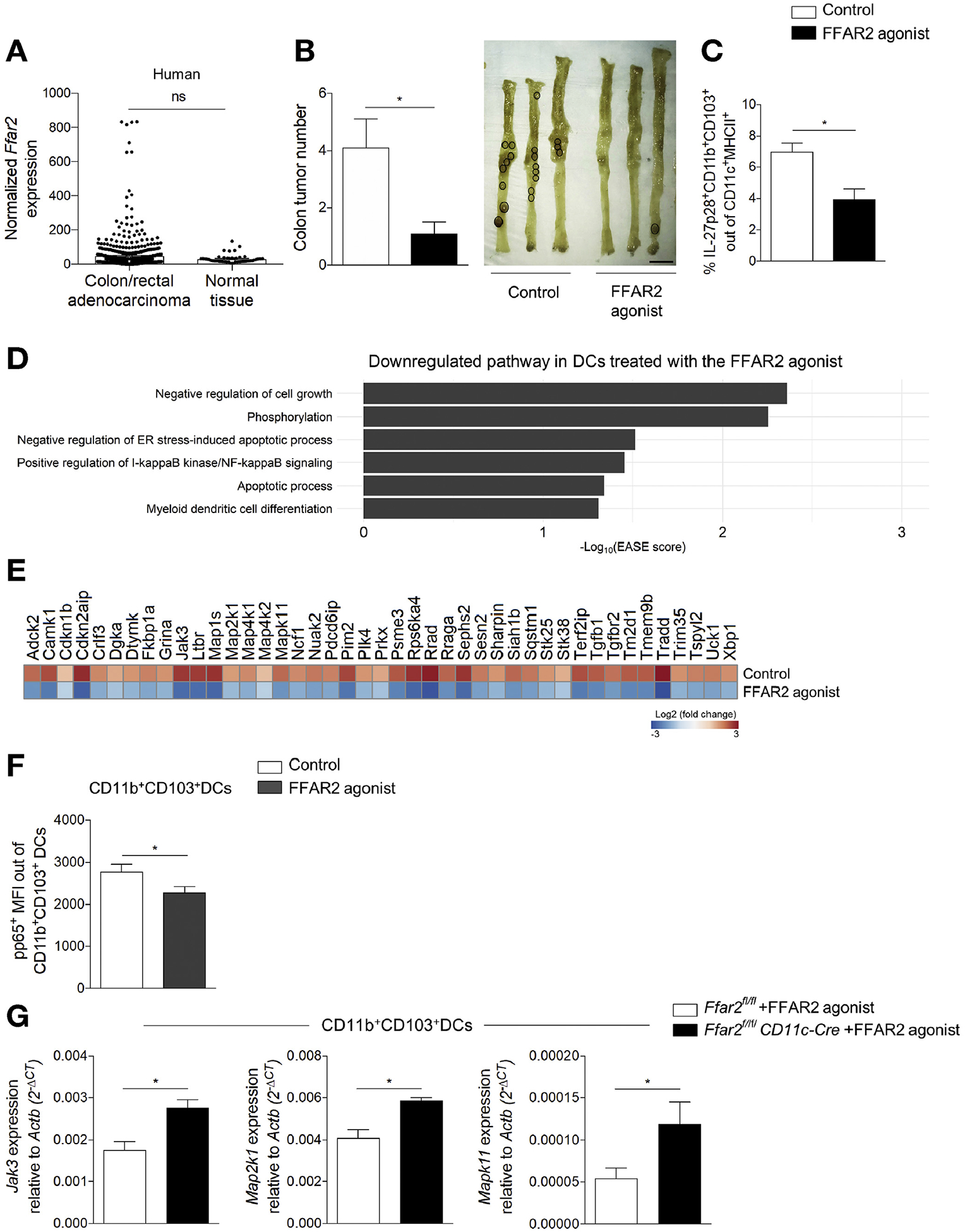Figure 6.

Agonist of FFAR2 reduces colon tumor burden and affects DCs. (A) Normalized FFAR2 expression in human colon and rectal adenocarcinoma tissue (N = 622) vs normal tissue (N = 51). (B) Tumor number (left) from ApcMin/+ mice with DSSinduced colitis fed a control (N = 9) or the FFAR2 agonist (N = 10). Representative tumor images (tumors circled, right). Scale bar, 1 cm. (C) Tumor frequency of IL27+ DCs from ApcMin/+ with DSS-induced colitis given the control (N = 4) or FFAR2 agonist (N = 5). (D) Differential expression analysis showing down-regulated pathways in DCs incubated with the FFAR2 agonist. (E) Heatmap of down-regulated genes from (D). (F) Activation of NF-κB (p65 subunit) in sorted MLN CD11b+CD103+ DCs (WT mice, N = 16) cultured with the FFAR2 agonist (10 μmol/L) for 30 minutes. (G) JAk3, Map2k1, and Mapk11 expression in sorted MLN CD11b+CD103+ DCs from Ffar2fl/fl (N = 12) vs Ffar2fl/flCD11c-Cre (N = 9) mice fed the FFAR2 agonist. Data in A are from the TCGA COAD and READ data set. Data from B–G are from ≥3 independent experiments and are plotted as mean ± SEM. *P < .05, Mann–Whitney U test (A–C), unpaired t test (F and G).
